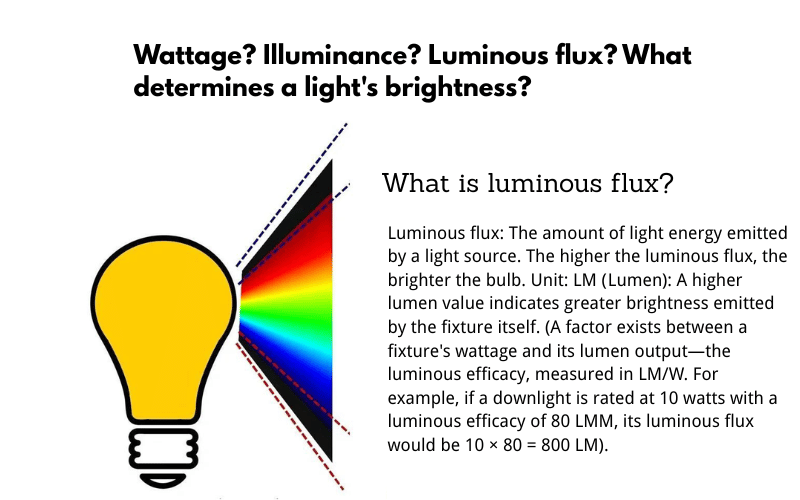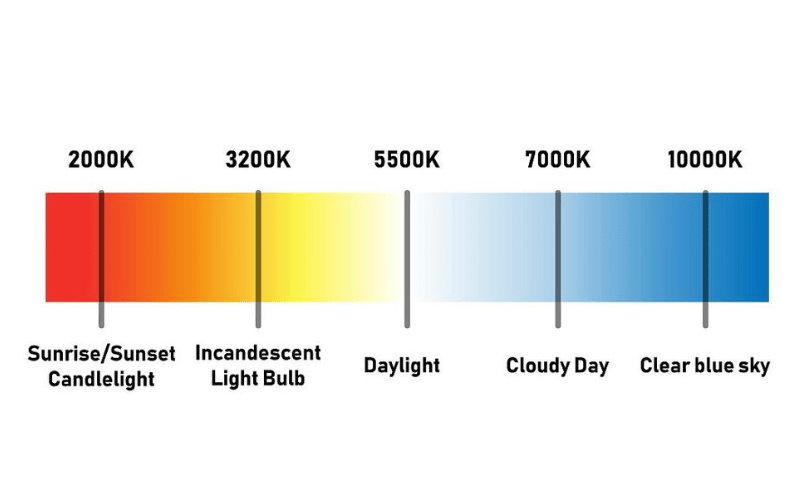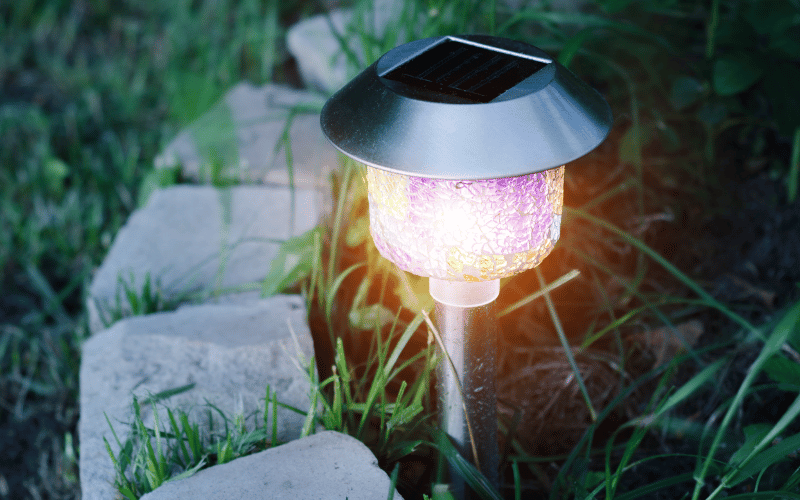Solar garden lights have become a favorite choice for homeowners looking to enhance their outdoor spaces. These lights offer an eco-friendly, cost-effective way to illuminate pathways, flower beds, and patios while adding charm and functionality to any garden. As their popularity grows, so does the need to understand how to choose the right brightness level for different applications. This is where lumens, not wattage, take center stage in determining the effectiveness of your solar garden lights.
Many people still associate brightness with wattage, but in the world of solar lighting, lumens are the true measure of light output. I’ve often spoken with homeowners who feel overwhelmed by the technical jargon, unsure of how many lumens they actually need. The truth is, the right lumen range depends on the purpose of the light, the size of the area you want to illuminate, and your personal preferences. For instance, a cozy garden path may only require 50-100 lumens per light, while a larger patio or security area might need 500 lumens or more for adequate brightness.
This guide aims to simplify the process of choosing the best lumens for your solar garden lights. By breaking down the key factors—such as the intended use, the size of the space, and the desired ambiance—you’ll gain the confidence to select lights that perfectly suit your needs. Whether you’re looking for subtle accent lighting or powerful illumination, understanding lumens will help you make an informed decision and create the outdoor space you’ve always envisioned.
Table of Contents
ToggleUnderstanding Lumens and Solar Light Performance
When it comes to solar lighting, understanding lumens is key to making informed decisions about brightness and performance. Many people still rely on wattage as a measure of light output, but in today’s world of energy-efficient LEDs and solar technology, lumens have taken the spotlight. Let’s break down what lumens are, how they compare to wattage, and how solar technology influences brightness.
What Are Lumens?
Definition: Lumens measure the total visible light output from a lamp or light source. In simpler terms, lumens tell you how bright a light will appear to the human eye. Unlike wattage, which measures energy consumption, lumens focus solely on brightness.
Why Lumens Matter More Than Wattage: Wattage used to be the go-to metric for brightness because traditional incandescent bulbs had a predictable relationship between energy use and light output. However, with the rise of energy-efficient LEDs, two lights with the same wattage can produce vastly different levels of brightness. For example, a 10W LED can emit anywhere from 800 to 1,500 lumens, depending on the quality and design of the bulb. This is why lumens have become the standard for evaluating brightness in modern lighting.
Example: Imagine you’re comparing two 10W solar garden lights. One produces 500 lumens, while the other outputs 1,000 lumens. Despite having the same energy consumption, the second light is twice as bright. This demonstrates why focusing on lumens, rather than wattage, is essential when choosing solar lights.
Lumens vs. Wattage
To further clarify the difference between lumens and wattage, let’s look at a quick comparison:
| Metric | Lumens (Brightness) | Wattage (Energy Consumption) |
|---|---|---|
| Definition | Measures the total visible light output. | Measures the energy used by the light. |
| Focus | Brightness and light quality. | Power consumption, not brightness. |
| Example | A 1,000-lumen light is bright enough for a patio. | A 10W light could be dim or bright, depending on lumens. |
| Relevance | The most accurate way to gauge brightness. | Useful for understanding energy usage. |
Why Wattage Is No Longer Reliable: In the past, higher wattage meant brighter light because incandescent bulbs converted most of their energy into visible light. Today, LEDs and solar lights are far more efficient, producing more lumens per watt. This shift makes wattage an outdated metric for determining brightness. Instead, focus on lumens to ensure your solar lights meet your needs.

How Solar Technology Affects Brightness
Solar lights don’t just rely on lumens to deliver performance. The technology behind the solar panel, battery, and LED also plays a critical role in determining brightness and runtime. Here’s how each component contributes:
- Solar Panel Size and Efficiency: The solar panel is responsible for capturing sunlight and converting it into energy. Larger panels or those made with high-efficiency materials (like monocrystalline silicon) can generate more power, which directly impacts the brightness and runtime of your solar lights. If the panel is too small or inefficient, the light won’t perform well, even with a high-lumen LED.
- Battery Capacity and Sunlight Duration: The battery stores the energy collected by the solar panel. A higher-capacity battery can hold more energy, allowing the light to shine brighter and longer. However, the battery’s performance also depends on the amount of sunlight the panel receives during the day. In areas with limited sunlight, even a high-capacity battery may struggle to charge fully, reducing brightness and runtime.
- LED Efficiency: LEDs are the workhorses of solar lights, converting stored energy into visible light. High-quality LEDs can produce more lumens with less energy, maximizing brightness without draining the battery too quickly. Look for solar lights with efficient LEDs to get the most out of your system.
By understanding how these factors interact, you can choose solar lights that deliver the brightness and performance you need. Remember, lumens are just one piece of the puzzle—solar technology and component quality are equally important in achieving optimal results.
Matching Lumens to Specific Garden Lighting Needs
Choosing the right lumens for your solar garden lights isn’t just about brightness—it’s about matching the light output to the specific purpose and area you want to illuminate. Each lumen range serves a unique role, from creating a soft, ambient glow to providing powerful illumination for security or large spaces. Let’s break down the ideal lumen ranges for different garden lighting needs and how to use them effectively.
Low Lumens (1 to 50 Lumens)
Low-lumen solar lights are perfect for adding subtle accents to your garden. These lights don’t aim to illuminate large areas but instead create a soft, ambient glow that enhances the aesthetic appeal of your outdoor space.
- Use Case: Accent lighting and subtle markers. These lights are ideal for highlighting specific features without overwhelming the surroundings.
- Typical Areas: Flower beds, walkway borders, and decorative garden elements like statues or fountains.
- Examples: Use low-lumen solar lights to outline a garden path or add a gentle glow to your flower beds. For instance, placing 10-lumen lights along a curved walkway can create a charming, inviting effect without being too bright.
Low-lumen lights act like the finishing touches on a painting—they add depth and character without stealing the spotlight.
Medium Lumens (50 to 200 Lumens)
Medium-lumen solar lights strike a balance between subtlety and functionality. They provide enough brightness for safe navigation while maintaining a warm, inviting atmosphere.
- Use Case: Pathway lighting and small area illumination. These lights are bright enough to guide the way but not so intense that they disrupt the ambiance.
- Typical Areas: Driveways, small patios, and steps.
- Examples: Install 100-lumen solar lights along your driveway to ensure safe entry and exit at night. For a small patio, a few 150-lumen lights can provide just the right amount of illumination for evening gatherings without overpowering the space.
Medium-lumen lights are like a reliable guide—they ensure safety and functionality while blending seamlessly into your garden’s design.
High Lumens (200 to 800 Lumens)
High-lumen solar lights are designed for task lighting and illuminating larger areas. These lights are bright enough to enhance visibility and provide functional lighting for high-traffic zones.
- Use Case: Task lighting and wide-area illumination. These lights are ideal for spaces where brightness is essential for safety or functionality.
- Typical Areas: Large yards, decks, and high-traffic zones like outdoor seating areas or entrances.
- Examples: Use 300-lumen solar lights to illuminate a large deck for evening barbecues or gatherings. For a spacious yard, 500-lumen lights can provide ample brightness to ensure visibility and security.
High-lumen lights are the workhorses of your garden lighting setup—they deliver the brightness needed to keep your outdoor spaces functional and safe.
Very High Lumens (800+ Lumens)
Very high-lumen solar lights are specialized solutions for large properties or commercial spaces. These lights provide powerful illumination, making them suitable for security and wide-area coverage.
- Use Case: Specialized lighting for large properties or commercial spaces. These lights are designed to deliver maximum brightness for critical applications.
- Typical Areas: Streetlights, parking lots, and large gardens.
- Examples: Install 1,000-lumen solar-powered streetlights to illuminate a long driveway or parking area. For a large garden, 800-lumen lights can provide comprehensive coverage, ensuring every corner is well-lit.
Very high-lumen lights are like the guardians of your outdoor space—they provide unmatched brightness and security for expansive areas.
By matching the lumen range to your specific garden lighting needs, you can create a well-lit, functional, and visually appealing outdoor space. Whether you’re looking for subtle accents or powerful illumination, understanding lumens ensures you choose the right solar lights for every corner of your garden.
Calculating Required Lumens for Your Property
Determining the right lumens for your property isn’t just about picking a number—it’s about understanding your space, how light behaves, and what your specific needs are. By carefully assessing the area, considering color temperature, and interpreting manufacturer specifications, you can ensure your solar lights deliver the performance and ambiance you’re looking for. Let’s break this process into actionable steps.
Assessing the Area and Light Distribution
Before you can decide on the number of lumens, you need to evaluate the size and layout of the area you want to illuminate. Proper planning ensures even light coverage and eliminates frustrating dark spots.
- Measure the Square Footage That Requires Illumination: Start by calculating the total square footage of the area. For example, a 10×20-foot patio would require 200 square feet of coverage. As a general rule, smaller areas like pathways need fewer lumens (50-100 per light), while larger spaces like patios or driveways may require 200-500 lumens per light.
- Tips for Ensuring Even Light Coverage: To avoid uneven lighting, space your solar lights so their beams overlap slightly. For instance, if a light has a beam spread of 10 feet, place the next light 8-9 feet away to ensure consistent brightness without gaps.
- Guidance on Light Placement for Optimal Overlap and Brightness: Position lights at key points, such as corners, pathways, and focal areas like seating zones or garden features. For larger spaces, consider a grid layout to distribute light evenly. If you’re lighting a pathway, stagger the lights on either side to create a balanced, inviting look.
Think of your lighting plan as a puzzle—each light should fit perfectly into the overall design, ensuring no piece of your property is left in the dark.
Considering Light Color Temperature (Kelvin)
While lumens determine brightness, color temperature (measured in Kelvin) defines the mood and functionality of your lighting. Choosing the right temperature can transform your outdoor space.
- Difference Between Warm White (2700K-3000K) and Cool White (5000K-6500K): Warm white lights (2700K-3000K) emit a soft, yellowish glow that creates a cozy, inviting atmosphere. These are ideal for decorative or accent lighting in gardens and patios. Cool white lights (5000K-6500K), on the other hand, produce a bright, bluish light that enhances visibility and is better suited for security or task lighting.
- How Color Temperature Affects the Atmosphere and Visibility in Your Garden: If you’re lighting a seating area or flower bed, warm white lights can make the space feel more relaxing and intimate. For driveways or high-traffic zones, cool white lights provide better contrast and visibility, making them safer and more functional.

Choosing the right color temperature is like setting the tone for a conversation—warm tones invite relaxation, while cool tones command attention and focus.
Interpreting Manufacturer Specifications
Not all solar lights are created equal, and understanding the fine print in manufacturer specifications can save you from disappointment. Here’s how to decode the details.
- How to Distinguish Between Actual Lumen Output and Advertised Peak Performance: Many manufacturers advertise peak lumen output, which represents the brightest moment under ideal conditions. However, actual lumen output—the brightness you’ll experience during regular use—can be significantly lower. Look for specifications that mention “sustained lumens” or “average lumens” to get a more realistic idea of performance.
- Evaluating Runtime Claims and Battery Life Cycles for Solar Lights: Pay attention to runtime claims, especially if you live in areas with limited sunlight. A light that promises 8 hours of runtime may only achieve this with a fully charged battery and optimal sunlight. Check the battery capacity (measured in mAh) and the number of charge cycles it supports. High-quality batteries typically last 1-2 years with consistent performance.
Interpreting specifications is like reading between the lines of a contract—understanding the details ensures you get what you expect and avoid surprises.
By carefully assessing your property, considering color temperature, and scrutinizing manufacturer claims, you can confidently calculate the lumens needed for your solar lighting project. This approach ensures your lights not only meet your functional needs but also enhance the beauty and safety of your outdoor space.
Optimizing Solar Light Performance and Longevity
Solar lights are an investment in sustainable and efficient outdoor lighting, but their performance and lifespan depend heavily on how they’re positioned, maintained, and used. By following best practices and understanding the features that influence long-term performance, you can ensure your solar lights remain reliable and effective for years to come.
Positioning and Maintenance for Efficiency
Proper positioning and regular maintenance are the foundation of efficient solar light performance. Even the most advanced solar lights can underperform if they’re not placed or cared for correctly.
- Best Practices for Solar Panel Placement to Maximize Sun Exposure: Solar panels thrive on direct sunlight, so positioning is critical. Place your solar lights in areas that receive at least 6-8 hours of unobstructed sunlight daily. Avoid shaded spots caused by trees, buildings, or other structures. For optimal results, angle the solar panel toward the sun’s path—south-facing in most regions. If your lights are adjustable, tilt the panel to match the sun’s seasonal position for maximum energy absorption.
- Routine Cleaning Tasks (Removing Dirt, Snow, or Debris): A dirty solar panel is like a foggy windshield—it blocks the light and reduces efficiency. Clean the panel monthly using a soft cloth or sponge with mild soap and water. After storms or during fall, check for debris like leaves or snow and remove them promptly. For snow, use a soft brush to avoid scratching the panel.
- Tips for Maintaining Batteries, Including Replacement Schedules: Batteries are the heart of your solar light system, storing the energy needed to power the light. To keep them in top shape, use high-quality batteries and replace them every 1-2 years or as recommended by the manufacturer. If you notice dimming or shorter runtimes, it’s likely time for a replacement. Store spare batteries in a cool, dry place to prevent degradation.
Think of positioning and maintenance as the daily care your solar lights need to shine their brightest. A little effort goes a long way in ensuring consistent performance.
Features That Impact Light Output Over Time
The design and features of your solar lights play a significant role in how well they perform over time. Choosing lights with the right features can enhance both their functionality and longevity.
- Importance of Durable Construction and Weather Resistance (IP Ratings): Outdoor solar lights face constant exposure to the elements, so durability is non-negotiable. Look for lights with a high IP (Ingress Protection) rating, such as IP65 or higher, which indicates resistance to dust and water. Durable materials like aluminum or high-grade plastic can withstand harsh weather conditions, ensuring your lights remain operational through rain, snow, and heat.
- Benefits of Motion Sensor Technology Versus Constant Illumination Mode: Motion sensors are a game-changer for energy efficiency. Lights with motion sensors only activate when movement is detected, conserving battery power and extending runtime. This feature is especially useful for security lighting or areas with intermittent activity. In contrast, constant illumination mode drains the battery faster and may not be necessary for all applications.
- Adjustable Brightness Settings for Energy Savings and Flexibility: Adjustable brightness settings allow you to tailor the light output to your needs. For example, you can use a lower brightness setting for ambient lighting and switch to a higher setting for tasks or security. This flexibility not only saves energy but also extends the life of your battery and LEDs.
Features like weather resistance, motion sensors, and adjustable brightness are like the fine-tuned gears of a machine—they ensure your solar lights operate efficiently and adapt to your needs over time.
By focusing on proper positioning, regular maintenance, and selecting lights with the right features, you can optimize the performance and longevity of your solar lighting system. These steps ensure your lights remain a reliable and sustainable solution for illuminating your outdoor spaces.
Quick Tips for Choosing the Right Solar Garden Lights
Selecting the perfect solar garden lights doesn’t have to be overwhelming. By focusing on your specific needs and understanding the key factors that influence performance, you can make a confident and informed decision. Here’s a checklist of actionable tips to guide you.
Match Lumens to Your Specific Needs
The brightness of your solar garden lights should align with their purpose. For ambiance, opt for low-lumen lights (1-50 lumens) to create a soft, inviting glow around flower beds or pathways. For safety, medium-lumen lights (50-200 lumens) are ideal for illuminating driveways, patios, or steps. If security is your priority, choose high-lumen lights (200+ lumens) to ensure clear visibility in larger areas or high-traffic zones. Matching lumens to your needs ensures you get the right balance of functionality and atmosphere.
Choose High-Quality Components for Better Performance and Longevity
Not all solar lights are created equal, and the quality of their components can make or break their performance. Look for lights with durable materials like aluminum or weather-resistant plastic, and check for a high IP rating (IP65 or higher) to ensure protection against dust and water. High-quality LEDs and efficient batteries, such as Li-ion or LiFePO4, will provide consistent brightness and longer lifespans. Investing in quality components upfront saves you from frequent replacements and repairs.
Look for Adjustable Brightness Settings to Customize Light Output
Adjustable brightness settings give you the flexibility to tailor your lighting to different situations. For example, you can use a lower brightness setting for a cozy evening on the patio and switch to a higher setting for tasks or security. This feature not only enhances functionality but also conserves energy, extending the runtime of your lights. Prioritize lights with multiple brightness modes to adapt to your changing needs.
Regularly Clean Solar Panels and Replace Batteries as Needed
Even the best solar lights need regular care to perform at their peak. Clean the solar panels monthly to remove dirt, dust, or debris that can block sunlight and reduce charging efficiency. Use a soft cloth or sponge with mild soap and water, and avoid abrasive materials that could scratch the panel. Replace batteries every 1-2 years or when you notice dimming or shorter runtimes. Proper maintenance ensures your lights stay bright and reliable.
Consider the Size of the Area and Desired Light Distribution When Selecting Lights
The size of your outdoor space and the way light is distributed are critical factors in choosing the right solar lights. For small areas like pathways or garden beds, a few well-placed lights with overlapping beams will suffice. For larger spaces like patios or yards, opt for lights with wider beam angles or higher lumens to ensure even coverage. Plan your light placement carefully to avoid dark spots and maximize efficiency.
By following these quick tips, you can select solar garden lights that perfectly suit your needs while ensuring long-lasting performance. Whether you’re creating a serene garden retreat or enhancing safety and security, the right lights will transform your outdoor space into a functional and beautiful haven.
Frequently Asked Questions (FAQs)
Q: What is the minimum recommended lumen level for illuminating a walkway?
A: For walkways, a lumen level of 50-100 per light is usually sufficient. This range provides enough brightness to ensure safe navigation without overpowering the surrounding ambiance. Place the lights evenly along the path to avoid dark spots and ensure consistent illumination.
Q: How does the size of the solar panel affect the light’s lumen output?
A: The size of the solar panel directly impacts how much energy it can capture and store. Larger panels can generate more power, allowing the light to achieve higher lumen output and longer runtimes. If the panel is too small, it may not provide enough energy to support high-lumen lights, especially in low-sunlight conditions.
Q: Are higher lumen solar lights always better for security?
A: Not necessarily. While higher lumens provide brighter light, the placement, beam angle, and motion sensor functionality are equally important for effective security lighting. A well-placed 500-lumen light with a motion sensor can often outperform a poorly positioned 1,000-lumen light in terms of coverage and deterrence.
Q: What is the typical lifespan of batteries in solar garden lights?
A: Most solar garden light batteries last 1-2 years, depending on their quality and usage. High-quality batteries, such as Li-ion or LiFePO4, tend to last longer and perform more consistently. Replace the batteries when you notice dimming or reduced runtimes.
Q: How often should I clean my solar light panels to maintain brightness?
A: Clean your solar light panels at least once a month to remove dirt, dust, and debris that can block sunlight. In areas with heavy pollen, pollution, or frequent storms, you may need to clean them more often. Use a soft cloth or sponge with mild soap and water for best results.
Q: Can I use a solar kit for lights to power high-lumen lighting fixtures?
A: Yes, but the solar kit must be appropriately sized to handle the energy demands of high-lumen fixtures. Ensure the solar panel, battery capacity, and controller are designed to support the wattage and runtime requirements of your lights. For high-lumen applications, look for kits with larger panels and high-capacity batteries.
Q: What is the difference between lumens and candela in solar lighting?
A: Lumens measure the total visible light output, while candela measures the intensity of light in a specific direction. Lumens are better for evaluating overall brightness, while candela is useful for focused lighting applications, such as spotlights. For most garden and street lighting, lumens are the more relevant metric.
Q: What are the lumen requirements for commercial-grade solar light street lamp applications?
A: Commercial-grade solar street lamps typically require 5,000-10,000 lumens, depending on the area and height of the pole. For highways or large parking lots, higher lumen levels (10,000-20,000) may be necessary to ensure adequate coverage and visibility. Always consider the pole height, spacing, and beam angle when determining lumen requirements.
Conclusion
Lumens provide the most accurate measure of brightness for solar garden lights, making them essential for selecting the right lighting. Match the lumen range to your specific purpose, area size, and the ambiance you want to create. Regular maintenance, such as cleaning panels and replacing batteries, combined with high-quality components, ensures your lights perform consistently over time. Take the time to evaluate your outdoor lighting needs and explore high-quality solar garden lights to achieve the perfect balance of functionality and ambiance for your space.


